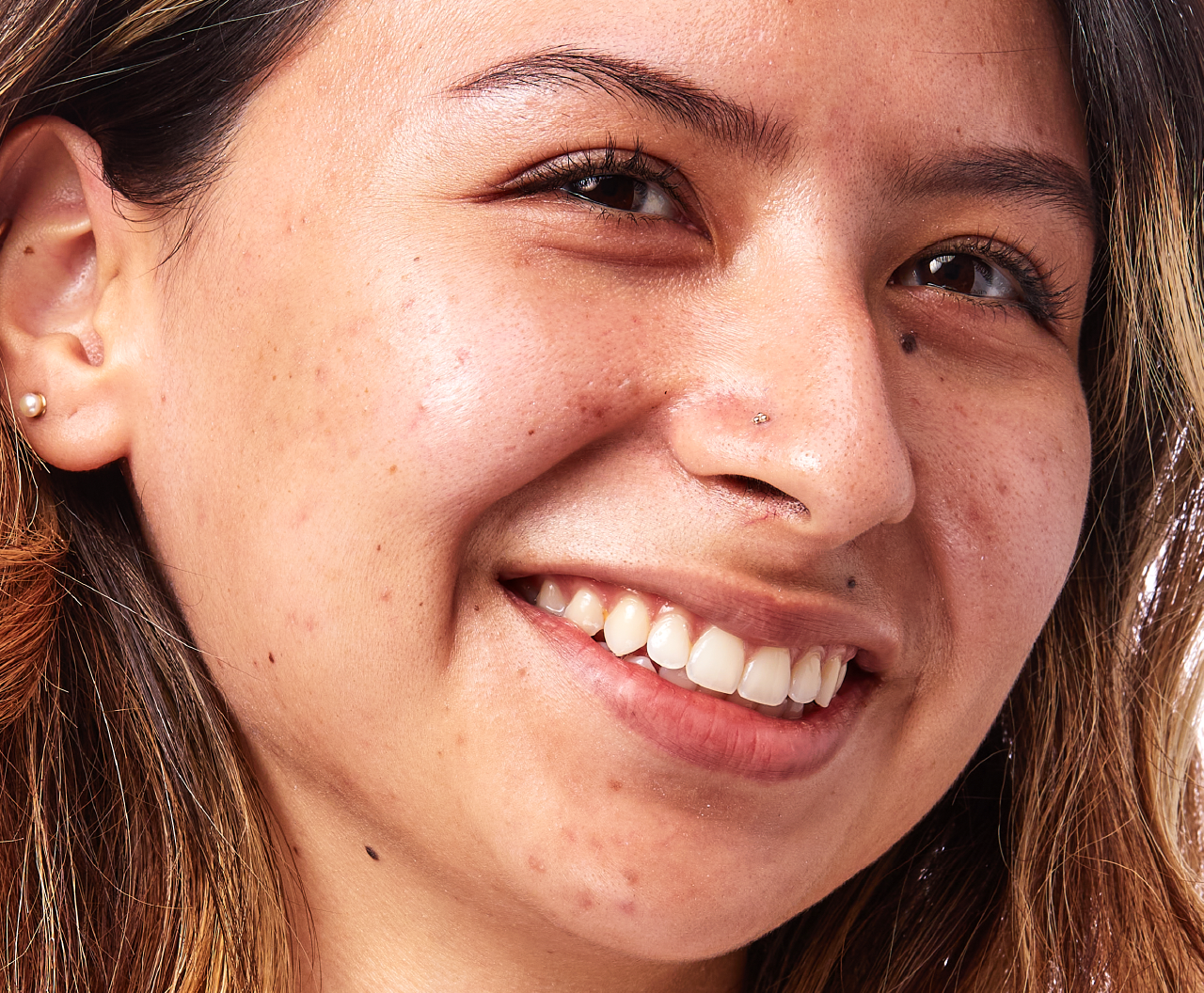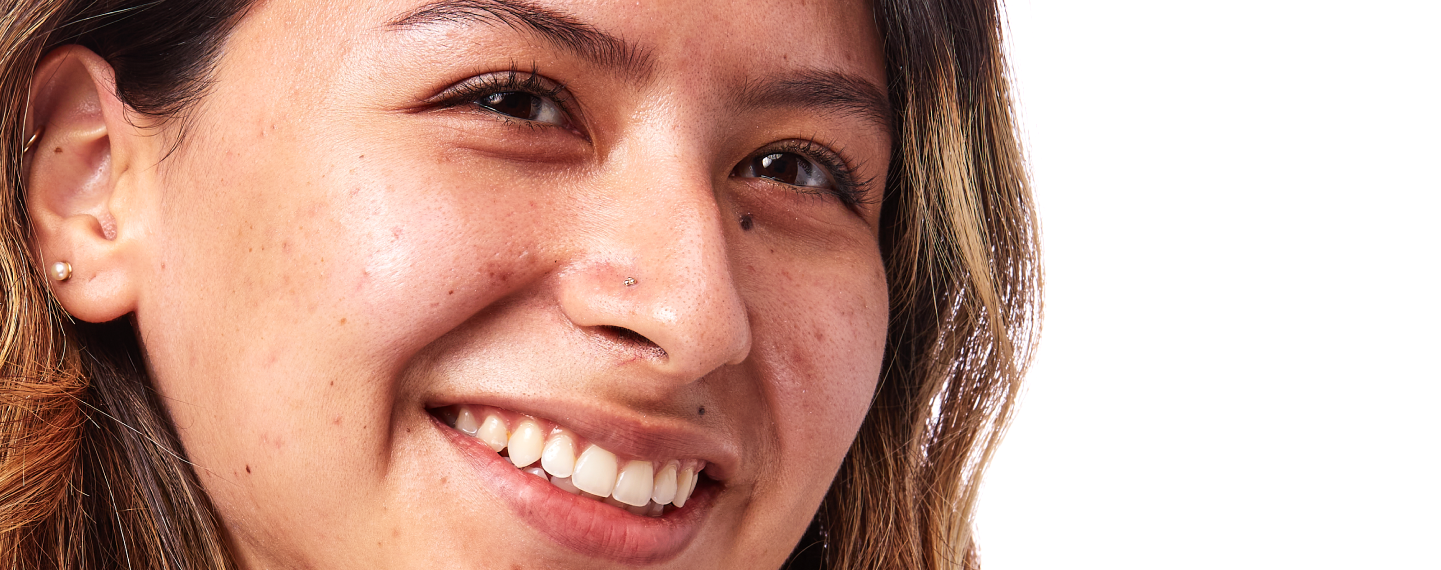Education
Does sugar cause acne?: How sweets affects your skin


SHARE
Education
Does sugar cause acne?: How sweets affects your skin
Medically reviewed by Mary Lucas, RN
Written by Apostrophe Team
Last updated 4/1/2024
If you’re beating yourself up over that roll of cookie dough you had this weekend, you shouldn’t be hard on yourself. A lot of people tend to regret the effects of the occasional indulgence in sweet treats, desserts, and pastries.
But should you blame that tube of deliciousness for this morning’s newfound blemish? Maybe.
A lot of women assume that a dessert-time cheat day or one carb heavy meal may cause a more direct form of consequences than bloat — consequences in the form of acne breakouts. But the science is far from clear on whether your extra scoop brought you that extra zit.
The relationship between sugar and acne is far more complicated than spoonful in, pimple out, and science is surprisingly not as far along in understanding what’s going on. But there are some things we know, and a reason to potentially blame that unbaked indulgence for the breakout.
What is Acne?
Acne is a bacterial condition caused by four factors: increased production of oil or sebum, dead skin cells clogging the hair follicles on the skin, a bacteria known as Propionibacterium acnes, or P. acnes (now called C. acnes), and inflammation.
Hormones, specifically the male sex hormones, androgens (which cause your skin to produce more oil), cause acne during puberty in young adults and teenagers.
This is why acne happens on your face, back, chest, or shoulders: it tends to happen on the parts of your body where there are more oil glands.
Many people grow out of acne once puberty is over, but some people can have their acne persist or even begin in adulthood.
Acne and Diet Are Highly Intertwined
It’s a harsh term, but referring to someone with acne as “pizza faced” points to some widely held misconceptions about acne: i.e. that greasy fatty and unhealthy foods contribute to severe acne.
It sounds logical: grease in the food, grease under the skin.
But the connection between diet and acne is far from a clearly established scientific fact.
There appears to be a correlation between diet and acne, according to numerous studies. For example, a 2012 Turkish study of over 2,000 adolescents found that the participants without acne had healthier dietary habits than participants with acne.
The study also found that participants with acne had higher fat intake, frequent sugar intake, and ate foods like burgers, pastries and cakes, or other foods that were associated with increased acne risk. It’s one of several that have shown associations between diet and acne severity.
To understand the impact of dietary sugar you have to understand glucose. Your body breaks carbohydrates down into glucose. Glucose in a food can be measured in two ways: the glycemic index (GI) and the glycemic load (GL).
In simple terms, the GI of a food essentially measures how quickly it can raise your blood sugar, which can cause an insulin spike.
The GL of a food on the other hand is a measure of how high it can raise your blood sugar overall, taking into account total glucose content. The glycemic load also factors in the amount of food being eaten.
Watermelon is a good example of why these numbers matter, according to Harvard Medical School. Watermelon has a high glycemic index, but has so few carbohydrates that it actually delivers a low total GL.
Understanding these two numbers helps you understand what the studies have shown: namely, that high GL and GI diets correlate to acne.
A 2017 study studied two groups of participants: thirty-two with no acne and 32 with moderate to severe acne. The study showed there was a correlation between the consumption of high GL foods and acne.
These findings are consistent with those from a 2016 study, which looked at similar measures in a total of 86 patients, 50 with acne and 36 “healthy” control subjects.
That study found that insulin levels, glycemic index, and glycemic load levels were “significantly higher” in patients with acne, confirming an association between acne and higher glycemic diets.
Sugar’s Role in Your Breakouts
While there’s compelling evidence that sugar can cause sugar, the ‘why’ part isn’t so clear.
Acne breakouts can be caused by a number of factors, including genetics, hormones, medications, stress, and more, and sugar may exacerbate all of these issues.
The exact mechanism hasn’t been pinpointed yet, though high glycemic load could affect anything from proper protein production to hormones — or both.
Most of the research out there ends with a call for more research.
What This Means For You
If you’re reading this, you’re likely here because you’re wondering whether that cheat day last week that ended with you finishing off the ice cream is responsible for your blemish today.
It’s not necessarily that simple, but the research says that if you’re cheating more days than you’re following the rules, you may be setting your skin up to fail. If you ate a larger-than-usual serving of something greasy like pizza, you very well may have upset the dietary balance, and sugar may be to blame.
The good news is that there are easy things you can do to get your skin back in the fight, like moderate those high glycemic foods, and reduce your high glycemic load foods to take yourself out of the bracket where you’re more likely to leave your skin vulnerable.
Trading foods, e.g. replacing soft drinks with green tea, white rice with brown rice, and white bread with whole-grain will be a great start, and moderating your intake of things like ice cream, fries and sodas with excess sugar will help reduce your total glycemic load as well.
References:
Like what you just read? Sign up for our email list to get the scoop on skincare science delivered straight to your inbox.

Deep Dives
A dermatologist shares his thoughts on the recent studies about benzoyl peroxide and benzene.
Read More
Education
What is milia?
What is milia? Today, we’re jumping into one type of bump that you may have heard about most commonly in infants — milia.
Read More
Education
Best moisturizer for acne-prone skin
If you have combination acne-prone skin, figuring out which moisturizer is best for your skin might be tough. In this guide, we break down the best moisturizer for combination, acne-prone skin.
Read More